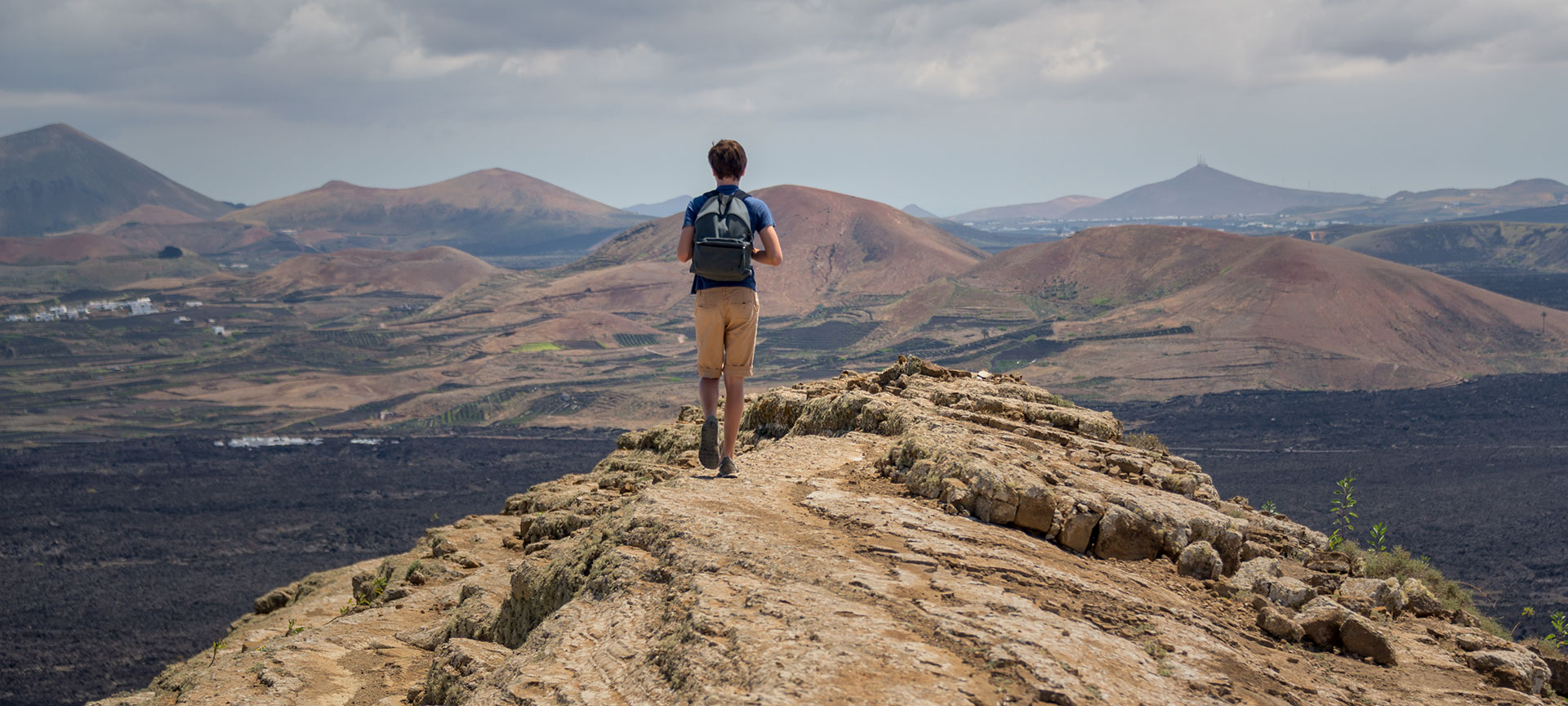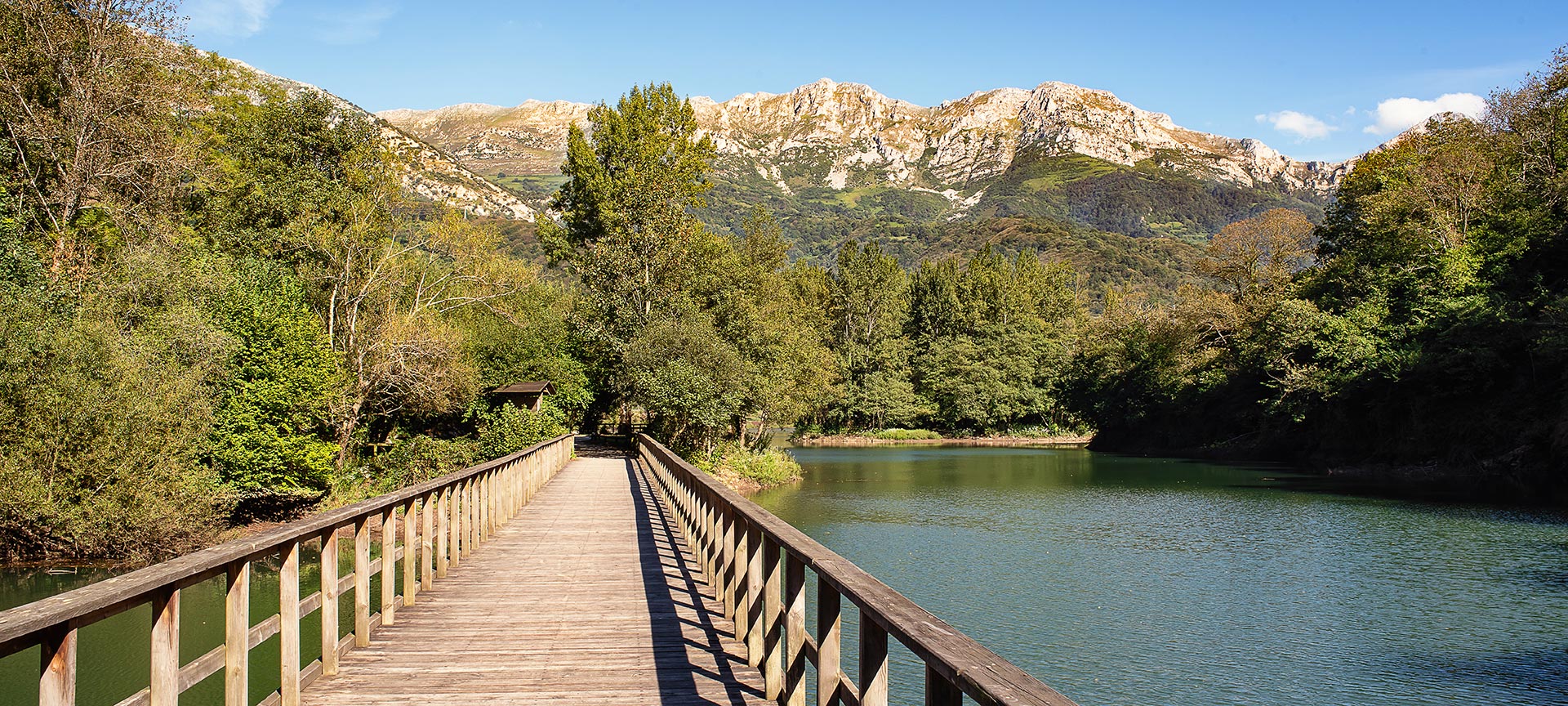Discover Spain's natural wild attractions in protected nature areas, and help towards their conservation. In Spain, you can find “the 5 great of the Iberian fauna”: Brown bear, Iberian lynx, wolf, Iberian imperial eagle and black vulture.Bring your camera to enjoy optimal conditions for nature photography. We challenge you to immortalise life.
Why Spain?
This is the best country in Europe for wildlife observation due to its wide variety, the protection of its endangered species, and the clusters of wildlife to be found in specific easy-to-reach sites that make this a convenient and attractive experience.Spain is known for its different types of forest and its exclusive flora the result of its position as a bridge between Europe and Africa.Its great mountain ranges serve as a habitat for a large number of species that live only there. What's more, this is the country with the highest number of UNESCO-designated Biosphere Reserves in the world.
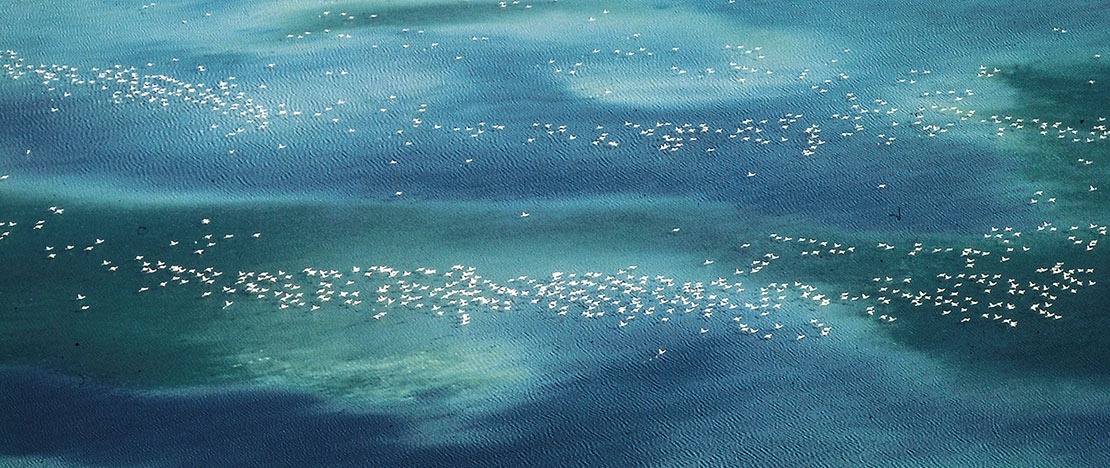
Its network of 16 National Parks contains all the best aspects of Spanish nature, and includes everything from imposing mountain landscapes through to Mediterranean forest.Spain is a country of spectacular mountains, volcanoes, river canyons, underground caves, fossil sites and such emblematic places as Atapuerca. In fact, it is also the European country with the largest number of geoparks declared by the UNESCO.
Birdwatching: Where to see birds in Spain
Enjoy bird watching with a selection of travel companies adapted to the needs of birdwatchers in the mountains of Extremadura or in the Pyrenees, and Navarre steppes, or in the plains and forests of Castile and Leon.The flights of migratory birds between Europe and Africa make the Strait of Gibraltar a paradise for ornithologists, who should on no account miss a visit to the mountain ranges of Andalusia. The winter concentrations of the European populations of cranes and geese, and the vast numbers of water birds that flock to its world-renowned wetlands are a unique sight. See it for yourself at Doñana Marshes, Tablas de Daimiel, Albufera of Valencia, or the Ebro Delta.In spring travel across the steppes to look for the heaviest flying birds, the great bustards. Over half of its world population lives on the Iberian steppes, from Villafáfila in Castile and León to the plains of Toledo in Castile-La Mancha, Cáceres and La Serena in Extremadura, and even the countryside in Madrid.
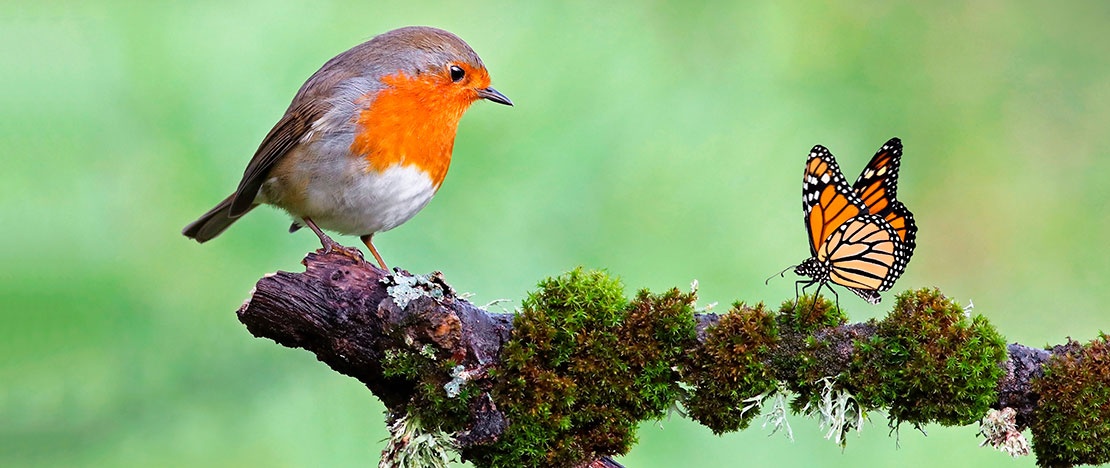
In summer, in the mountains Picos de Europa National Park, the Sistema Central (Gredos, Guadarrama) and the Pyrenees in Aragon and Catalonia you can spot various forest-dwelling and high-mountain birds. And we must not forget the seabirds on the beaches and coasts of Galicia, Asturias, Cantabria, the Basque Country, Catalonia, Valencia, Murcia, the Canary Islands and the Balearic Islands.Spain is a destination of choice for ornithologists from all over the world. You can enjoy the birds and their habitats practically across the entire country. You can find more information about birds and their habitats and migratory customs here. If you want to know more about places to see different types of birds, click here.With some foundations specialising in the conservation of species, you will be able to learn about the advances in their preservation, and visit biological stations and their conservation programmes, like for bearded vultures in Asturias and Iberian imperial eagle in Castilla-La Mancha.
Large mammal watching
You can explore bear territory in the central part of the Cordillera Cantábrica mountains between León and Asturias in the nature reserves of Somiedo and Fuentes del Narcea (both in Asturias), which are home to the largest bear population. The Oso Pardo Foundation and some companies will help you to correctly observe this sensitive species, especially between April and September. You can find more information on the brown bear in Spain here.Meanwhile, in the mountains, you will discover the world of the wolf and its relationship with humans. You can observe this legendary animal with the help of experts in the mountains of the Sierra de la Culebra, Cordillera Cantábrica and Picos de Europa.
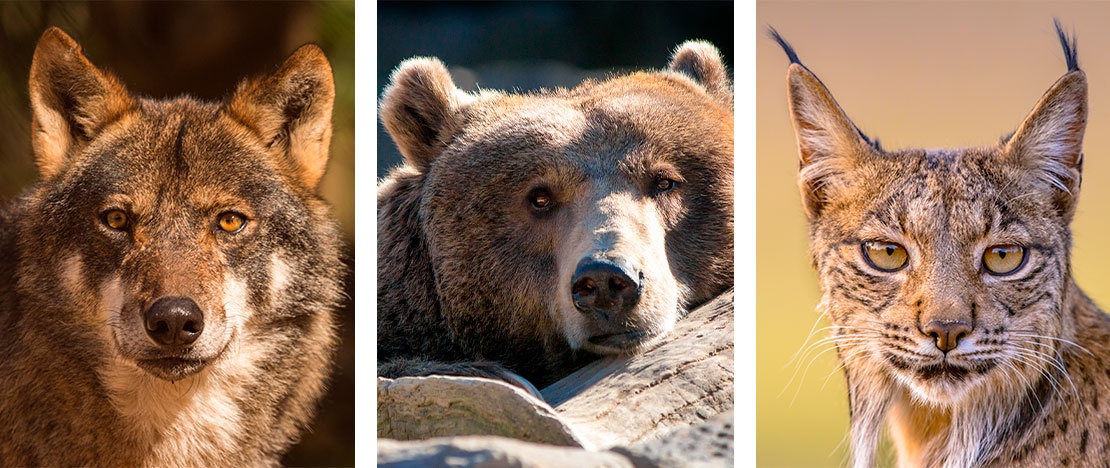
Look out for the Iberian lynx –the most endangered feline in the wild– which only lives on the Iberian Peninsula. They can be seen with the assistance of specialist companies in the Doñana National Park and in the nature reserves that dot Sierra Morena (Cardeña and Montoro, Andújar). The population is recovering through a programme of captive breeding and release into the wild. There are currently four breeding centres in Spain and lynxes can be seen in captivity at the Zoobotanical Garden of Jerez de la Frontera (Cádiz).
Whale watching
Did you know that the Canary Islands is one of the most important marine areas in the world for the conservation of cetaceans? That is why you will be able to see dolphins throughout the year, and particularly in the vicinity of the southwest coast of the island of Tenerife and very close to La Gomera. In any case, trips are organised from all the islands because their waters are frequented by more than twenty different species of cetaceans.
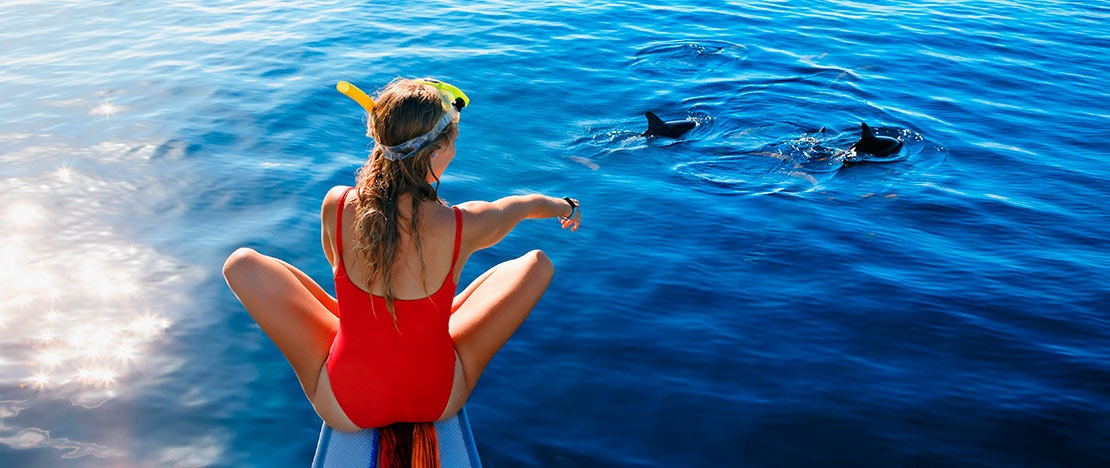
Other areas where you can see cetaceans are Asturias, Galicia, the Basque Country, the Balearic Islands and Andalusia. In this last place, in early summer you can see groups of orcas in the waters of Tarifa, in the Strait of Gibraltar (Cadiz).
Stag rutting
Stag rutting is a spectacle that takes place in many parts of Spain between September and October. This is the stag's mating period and it is easy to hear the guttural bellows and see the males in heat, especially at sunset. So we recommend that you bring warm clothing.
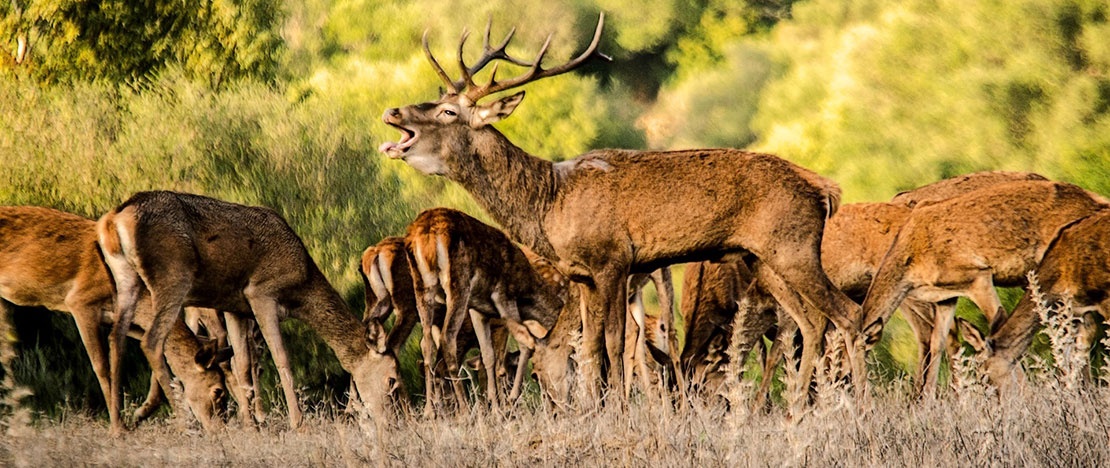
Here are some of the places for you to see it: the Montes de Toledo and Cabañeros National Park in Castile-La Mancha; Sierra de San Pedro and Monfragüe National Park in Extremadura; Doñana National Park, Sierras de Cazorla, Segura y las Villas Nature Reserve, Hornachuelos Nature Reserve and Alcornocales Nature Reserve in Andalusia; Sierra de Cameros in La Rioja; Picos de Europa National Park in Asturias; Saja Nature Reserve in Cantabria; Boumort Nature Reserve in Catalonia; Sierra de la Culebra, in Zamora; and the nature reserves of Fuentes Carrionas and Fuente Cobre-Montaña Palentina, both in Castile and Leon.
Looking for endemic flora
Spain's natural diversity makes it highly likely you'll find numerous species of flora that only grow in Spain. A good example is the Canary Islands, where it is estimated that 30% of its fauna and flora is endemic. Some examples are the Teide violet, echium, and Teide broom, among many others. Discover the most unique flora of the Canary Islands in its national parks: the forests of Canary Island pines in the Caldera de Taburiente in La Palma, the laurel forests in Garajonay, in La Gomera, the broom on the Teide in Tenerife.
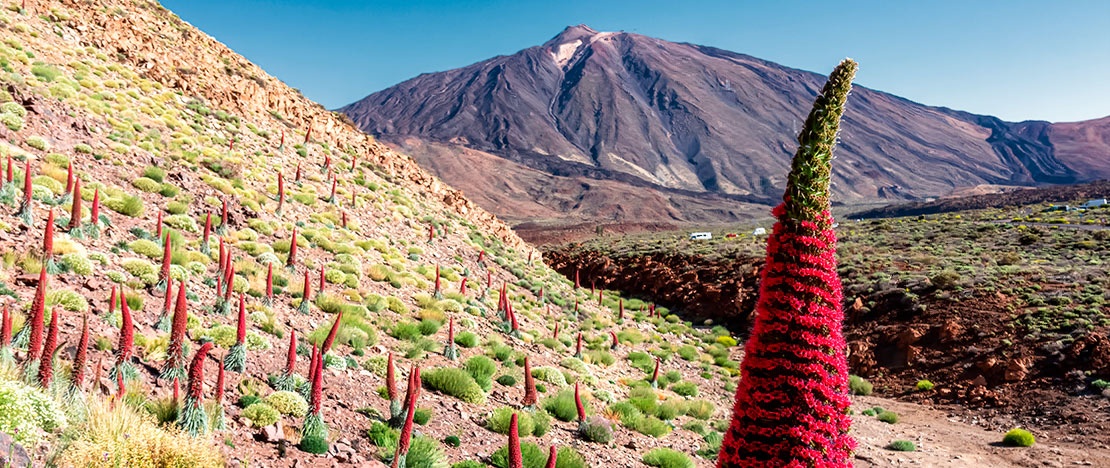
Photograph the endemic flora of the highest peaks in Sierra Nevada, the Pyrenees or Picos de Europa, and the wetlands of Castile-La Mancha. Walk through the best preserved forests such as the Irati Beech Forest in Navarre, the Oza Forest in Aragon, the Bonaigua fir forests in Catalonia, the oak groves of the Cantabrian Mountains, the pine forests of the Sierra de Guadarrama, and the juniper groves and riverside forests of Castile and Leon and Castile-La Mancha.
Photograph nature
If you like photography and nature, enjoy. Be respectful with the environment and make the most of the many hours of sunshine in Spain to put all your skills to the test in its natural spaces. In addition to being able to immortalise animals at risk of extinction and numerous endemic flora, you'll also have the chance to enjoy spectacles such as the migratory flight of birds like cranes, in addition to spectacular viewing points and landscapes which change with the different seasons of the year, and can include everything from beech forests in autumn to snow-capped mountains, volcanoes, deserts, beaches and marshes.
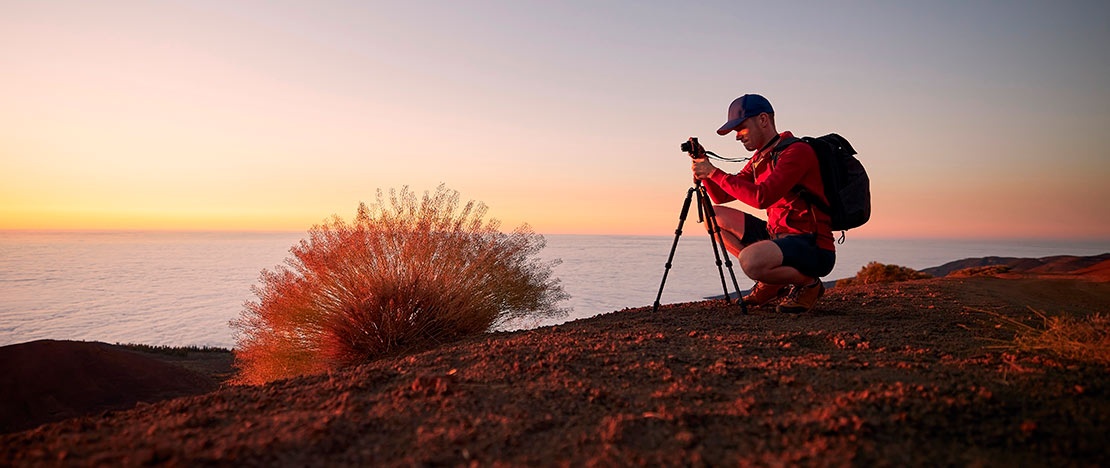
Discover the best preserved sea beds in the Mediterranean and its fish species in the Cabrera National Park in the Balearic Islands, and the kelp forests in the National Park of the Atlantic Islands in Galicia. You can practise your underwater photography in Spain's Marine Reserves in the Canary Islands, Catalonia, Region of Valencia and Murcia.Whether you're an expert or you're just an aspiring nature photographer, you can find companies that organise photographic safaris around Spain, or that will rent out “hides” for you.

